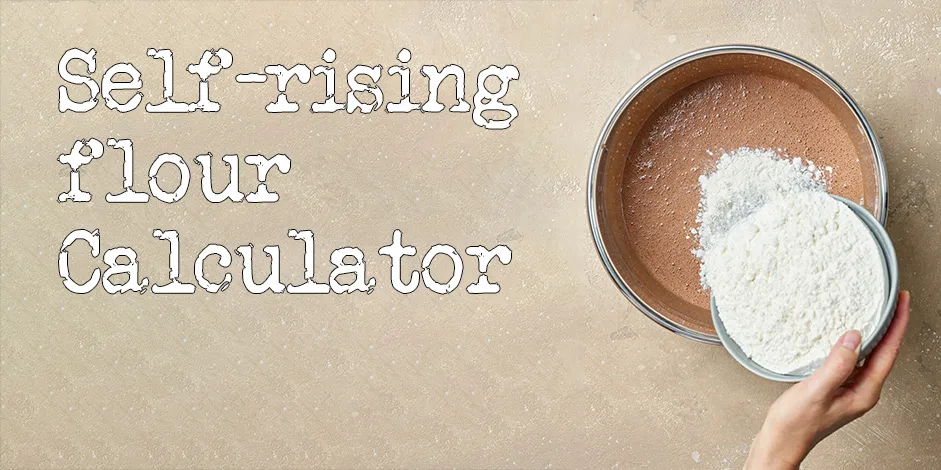Are you out of self-rising flour, or is it unavailable where you live? Don’t fret because I made this simple tool that helps you determine how much flour, baking powder, and salt you need to get the exact amount. Then you don’t need to have another staple in your cupboard, and you can make it whenever you need it.
The instructions are super easy: Select the unit you’d like to use: grams, cups, or ounces, and type the number you need, and it is calculated automatically.
What is self-rising flour?
Self-rising flour is a type of flour that has a leavening agent, usually baking powder, and salt already added to it. This means that when you use self-rising flour in a recipe, you don’t need to add baking powder or salt separately.
Self-rising flour is commonly used in recipes for biscuits, pancakes, and quick bread, where a light and fluffy texture is desired. However, it’s important to note that self-rising flour is not recommended for yeast bread recipes, as the added leavening agent can interfere with the yeast’s ability to rise properly.
Is homemade self-rising flour more healthy?
Homemade self-rising flour is not necessarily healthier than store-bought self-rising flour, as the health benefits or drawbacks of the flour depending on the type of flour used and the added ingredients.
All-purpose flour, commonly used to make self-rising flour, is generally refined and processed, meaning it has had the bran and germ removed, resulting in a loss of some nutrients and fiber. However, some brands of all-purpose flour are enriched with added vitamins and minerals, such as iron and B vitamins, to replace some of the lost nutrients.
The baking powder and salt added to self-rising flour are generally present in small amounts, so they do not contribute significantly to the nutritional profile of the flour.
If you want to make a healthier version of self-rising flour, you could consider using whole wheat flour instead of all-purpose flour, providing more fiber and nutrients. However, this may also affect the taste and texture of the final product, so you may need to experiment with different ratios of whole wheat flour to all-purpose flour.



